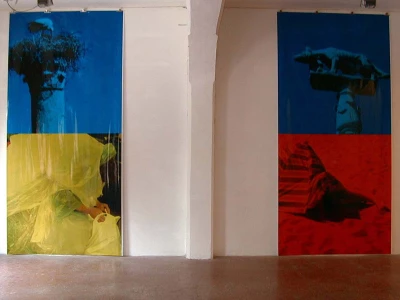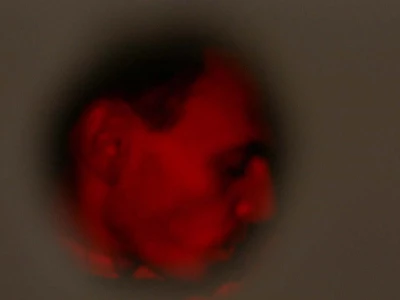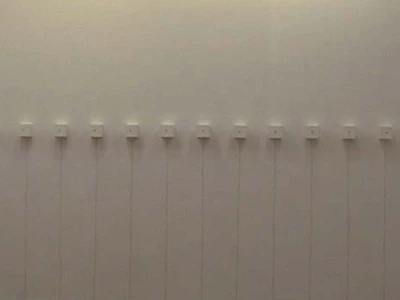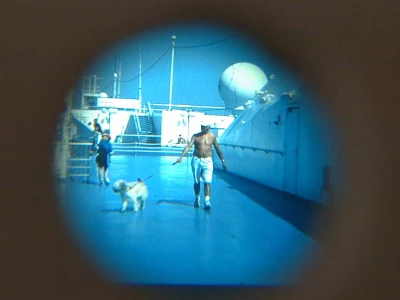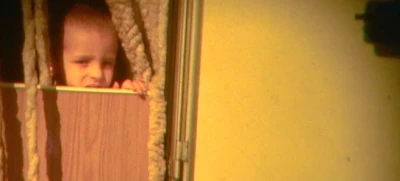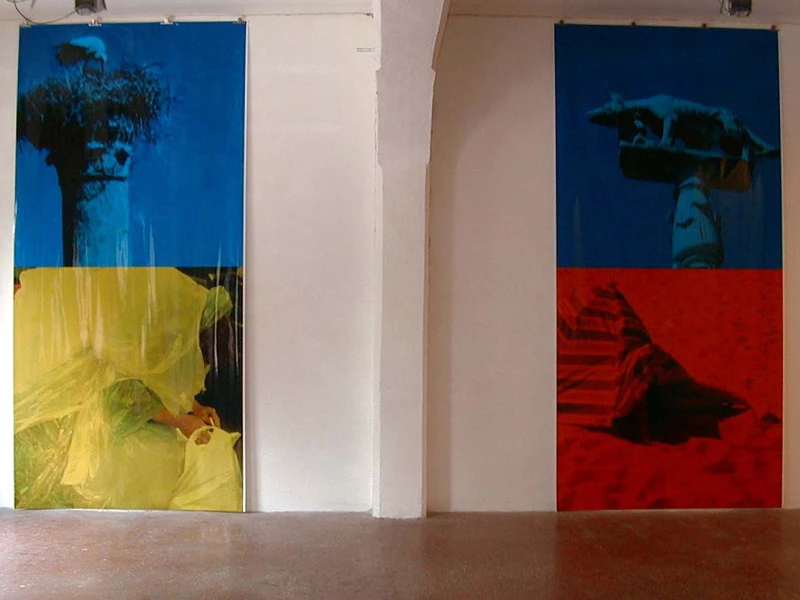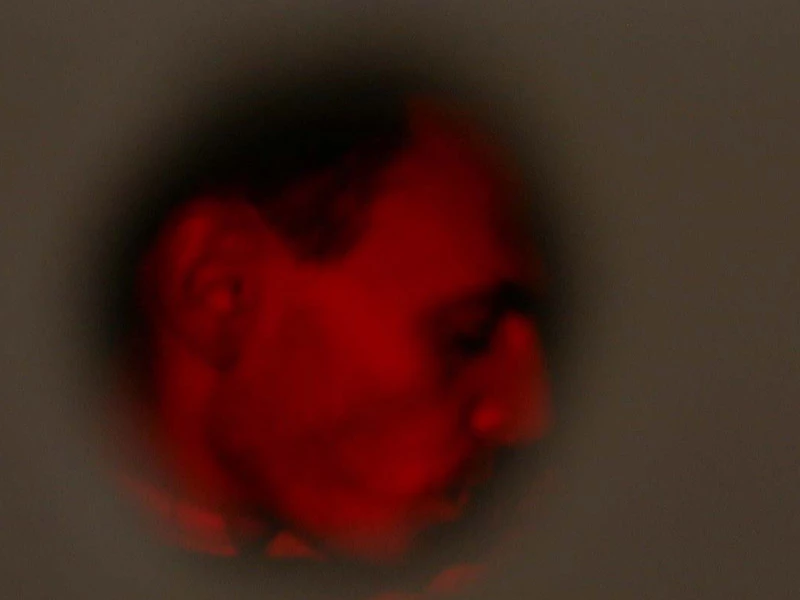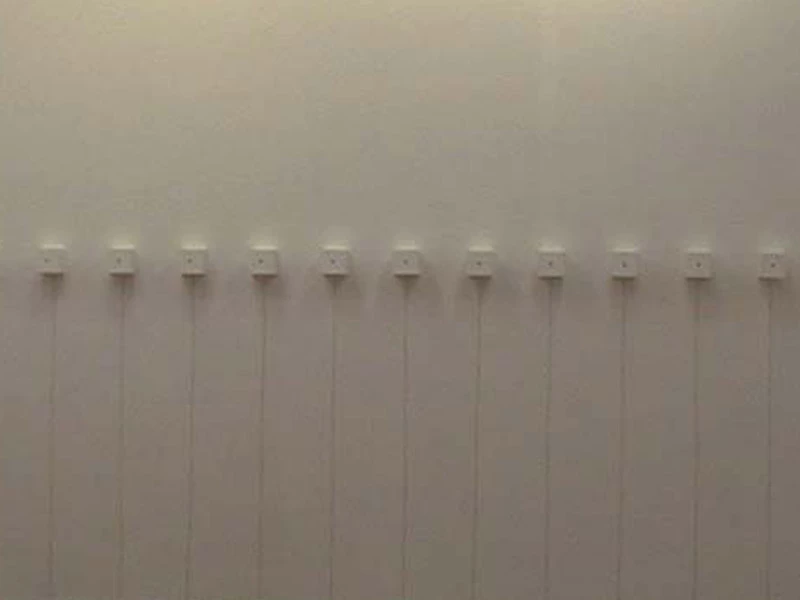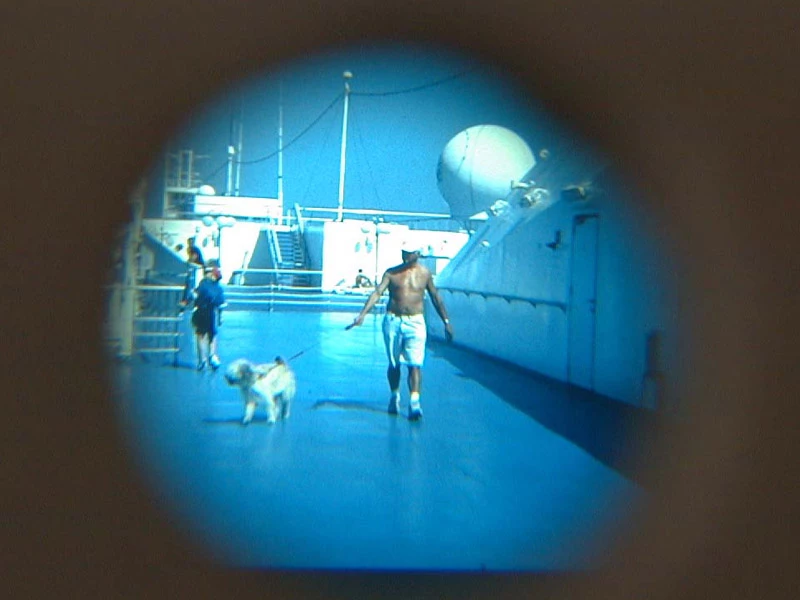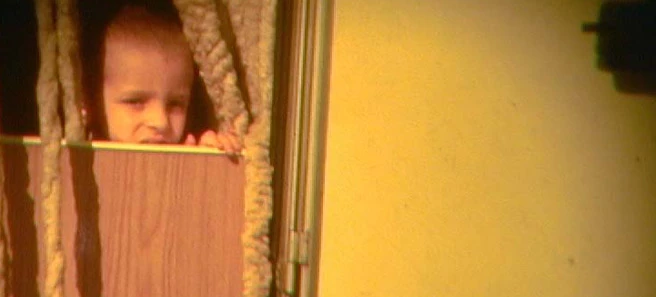Barbara Faessler • Lonely House
Curated by Angela Vettese
Lonely House, Barbara Faessler
02.04.2000 - 23.04.2000
Applying a colored filter to a photographic image means stripping it of its supposed objectivity and emphasizing a personal point of view. Associating two images implies subjective thought processes. The very act of looking is always veiled by moods, baggage of knowledge, and fortuitous circumstances that make the same thing appear differently to two different people.
The individual point of view is central to the work of Barbara Faessler, which takes shape in the solo exhibition at Careof in the form of two photographic diptychs and, in a space ideally set apart, thirty-eight visual boxes in which, by bringing the eye close to their central hole, it is possible to glimpse an image projected by a slide viewer.
The individual point of view appears here connected to the theme of dwelling, that is, of a certain person’s being in a here and now. In the diptychs and the thirty-eight slides, a wide range of dwelling situations is presented, from huts to bourgeois houses, from the interior of a ferry to distant buildings in Rotterdam. In an ideal zooming process into personal vision, the scenes progressively enter a sphere increasingly private and tied to everyday domestic life.
All the images are taken from an archive of photographs that the artist has taken over the years and that, in some cases, she has already used in performances with slide-shows and recitation of disconnected sentences that narrated, in three different languages, memories, actions, and desires. The use of filters is also in continuity with her previous work: installations in which she used plastic curtains to divide environments, whose sections were connected but only visible through a distortion of light data imposed by the curtains themselves.
The choice of images is entirely empirical and dictated by associations that are sometimes conscious and formal, other times more linked to contingencies. In each case, the focus is on details of space and fragments of time, without explicit connections between them.
In this way, Barbara Faessler emphasizes the subjectivity of vision without falling into autobiographical narration or the temptation of the sensational image: what is conveyed is a state of familiarity, in which the subject loses any romantic connotation and instead acquires, even in the description of themes more closely tied to affection, the same hardness we recognize in the experience of the present compared to that of memories; but precisely thanks to this state of normalcy and presence in a community, the subject reveals itself in all its irreducible separation from others.
Angela Vettese
